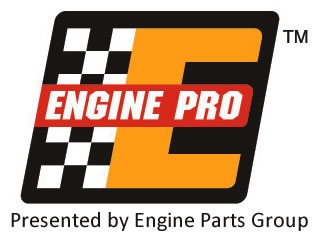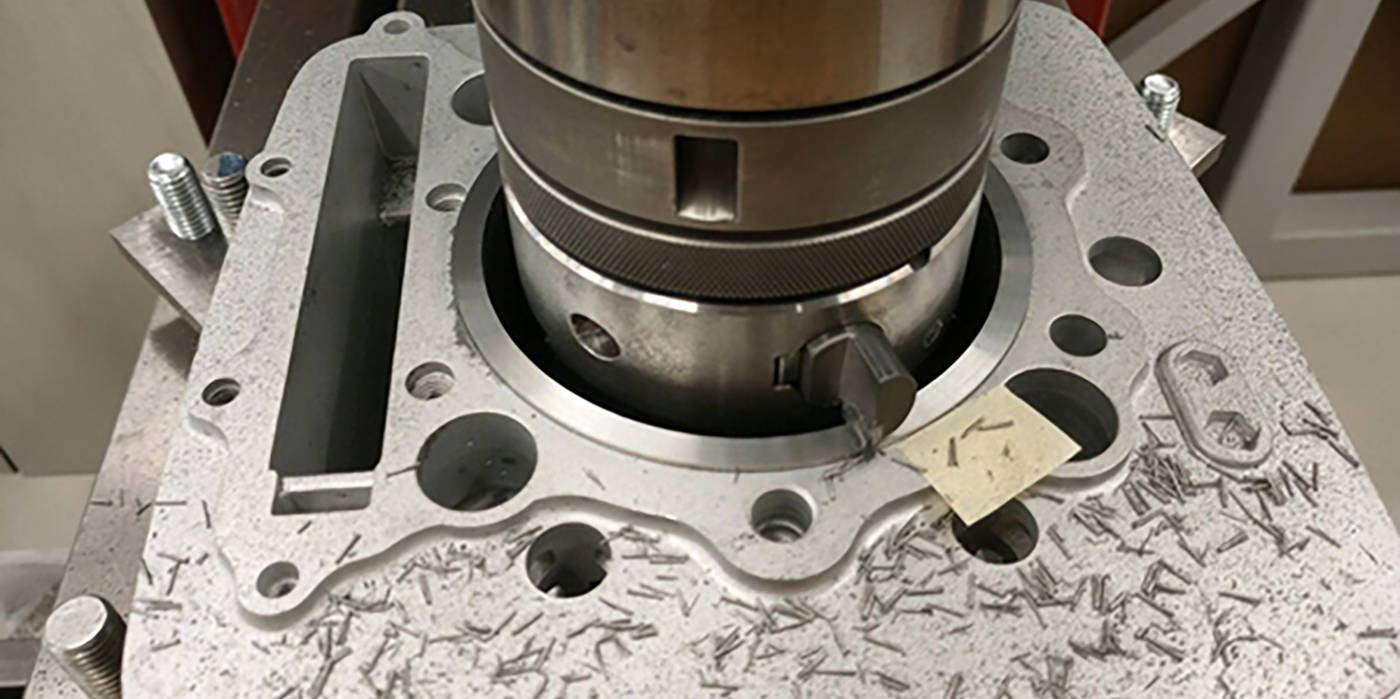Let The Light Shine In
When I’m struggling to see the valve keeper groves on an overhead cam head with “bucket-style” lifters, I attach a small flashlight to shine through the top of my air-operated spring clamp. This puts the light directly in the area needed.
This also leaves my other hand and mouth available for other tasks (A.K.A. swearing and trying to hold the keepers in place!). Using axle grease on the inside of the keeper to hold it on the valve stem is also a big help.
Darrin Anderson
Sterling Bearing Inc.
Kansas City, MO
More Knowledge, Less Effort
In a resent issue of Engine Builder magazine (Feb. 2015), we read how the Internet can be your friend with all the available info on manufacturers’ web pages, forums and articles. However, in searching for that information you may be overwhelmed by the number of pages that come in response to one search. My wife taught me a trick for refining a search that has helped me narrow my sites.
When searching for specific info, putting the specific words or phrase you are searching for in “quotes” narrows your results to the words in that particular sequence. Simply putting several words in the search finds those words anywhere on any page on the net. For example, if you’re searching for 1.6 Ford industrial, you may find pages about the 1.6 Mazda, a Ford tractor or industrial cleaner, or something along those lines, not the “Ford 1.6 industrial” engine you may be looking for.
Also, if I am specifically looking for information found in a forum, I add the word “forum” to my search and it will help me find forums in which people share experiences, pictures and knowledge.
Brad Luck
Weaver Auto Parts
Sauk City, WI
Ball Plug Removal
When I’m struggling to see the valve Ball plugs that can’t be accessed and knocked out are difficult to remove. I use my Heli-arc welder and heat the ball until it is red hot. Then I weld a filler rod to it. When cool, it is usually loose and can be pulled out. If the ball is staked in, you’ll have to grind the stake marks away first. I’ve used this procedure on cranks, blocks and heads.
Randy Torvinen
Torvinen’s Machine
Menahga, MN
Good Cores, Great Heads
I’ve heard many shops complain about the finish and quality of some of the new bare cylinder head castings that are imported into the U.S. No one ever complains about the price, just the finish. In my shop, I look at these new castings as “a good core.” I expect them to need – at minimum – the seats touched up. Those that use a MLS head gasket may need to be surfaced and I also check valve-to-guide clearance.
It seems no one has ever bought a new casting from the OEM! If you had, you’d see the potential value in these inexpensive offshore castings.
My name is going on the finished product, so I want the job done correctly. I make sure I charge the customer enough to cover my time and make a reasonable profit off the new part.
Tom Prodahl
Cylinder Head Service
Minneapolis, MN
Noisy Doesn’t Always Mean Defective
Hydraulic valve lifters are probably the most precision-machined part inside any engine. It does not take much to cause one to operate incorrectly. We’re not referring to lifter failure due to metal-to-metal contact with the camshaft here. In this case we’re talking about lifter noise and/or a lifter that does not hold oil pressure and is unable to carry the pushrod properly through the full rotation around the cam lobe.
Noise from the lifter or valve train can come from something as simple as low oil level in the engine. Momentary lifter noise when an engine is started up is normal operation if the noise goes away in a few seconds. Oil drains from some of the lifters while the engine is not running. If the noise persists, oil level may be low in the engine allowing the oil pump to push air into the oil galleys and into the lifters.
An overfilled crankcase can also cause noise. The crankshaft counterweights can churn the oil into foam. When foam is pumped into a lifter it will be noisy. A damaged oil pan, or a loose or cocked pickup screen can also cause an oil pump to push air to the lifters. Noisy operation at higher engine speed and little or no noise at low speed can be a sign of air in a lifter.
A lifter that is noisy at idle to 1500 rpm may be caused by worn valvetrain. Check for worn or scuffed valve tip or rocker arm face, excessive valve stem to guide clearance, excessive valve seat or valve face runout, or a valve spring that is out of square. A valve spring damper clicking on a rotator can cause a similar noise. Worn pushrod tips or rocker ball seats can cause a continuous noise no matter what the rpm. This is especially common on roller lifter engines where the pushrod never spins, since the lifters are not rotating.
An intermittent noise that goes away with increased engine speed is usually caused by dirt. This may be due to poor maintenance or from a newly rebuilt engine that was not cleaned properly before reassembly.
There can be such a thing as a defective lifter, but there are several conditions that can lead to lifter noise and these should be checked before we just throw another set of lifters at any noise problem.
Engine Pro Tech Committee with thanks to Federal-Mogul Corp.














